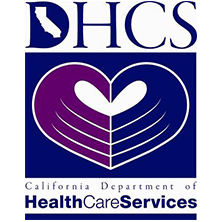According to the Centers for Disease Control and Prevention (CDC), between 2011 and 2015, “excessive alcohol use was responsible for an annual average of 95,000 deaths and 2.8 million years of potential life lost. Almost half of these deaths and three-quarters of the years of potential life lost were due to binge drinking”.
In 2018, the CDC adds that 16% of the adult population reported binge drinking.
And those 95,000 annual deaths make alcohol the third-leading preventable cause of death in the United States according to the National Institute on Alcohol Abuse and Alcoholism (NIAAA).
What Are the Signs Someone Has a Drinking Problem?
Despite alcohol taking so many lives each and every year, it’s still a weekend or after-work activity for so many people across the country. It’s socially acceptable to drink in just about any setting; be it a ball game, a barbeque or a birthday party, alcohol is ingrained deeply in our society.
Because of this, sometimes it’s just not easy to notice when drinking goes from something a person controls to a substance that controls them.
It’s insidious in that way.
Here’s what to pay attention to and look out for:
- Inability to control the amount being consumed and drinking more than intended
- Unable to cut back despite trying
- Blacking out
- Getting drinks, drinking and recovering from drinking take an increasingly large part of the day
- Work, school and home life suffer due to alcohol
- Making excuses to drink, i.e., it relieves stress or it’s needed to be social
- Avoiding activities or places because they don’t involve drinking
- Craving alcohol
- Drinking in secret or drinking alone
- Engaging in more and more reckless and dangerous behavior like drunk driving
- Legal and financial issues related to drinking
- Putting alcohol before family and friends
- Continuing to drink despite clear negative effects to yourself and others
- Feeling hungover or going through withdrawal symptoms when not consuming
- Mood swings and irritability
- Drinking larger amounts as time passes due to a developed tolerance
If you’re starting to see some of these signs, don’t ignore them. Take note and be proactive if it gets worse.
When Is It Time to Go to an Alcohol Rehab in Orange County, CA?
But how do you know when it’s time to take action?
There’s not a hard and fast line that you need to wait for to help yourself or a loved one, if alcohol has come to take control, acting sooner rather than later can make all the difference.
Letting an addiction to alcohol, or an alcohol use disorder (AUD) as it’s known, continue to engulf someone makes pulling them out of it all the more difficult.
If the warning signs are piling up, don’t hesitate to explore your options and talk to addiction specialists about alcohol rehab in Orange County, CA.
How Safe Harbor Can Help You or Your Loved One Stop Drinking
At Safe Harbor, our team of dedicated clinical and medical professionals has been helping people conquer their alcohol addiction for nearly 3 decades.
We take you through the entire process, from the first step of detox to individualized inpatient or outpatient treatment depending on the severity of the alcoholism through to aftercare planning to ensure you’re able to maintain your well-earned and hard-fought sobriety.
With a holistic approach that includes evidence-based treatment modalities like cognitive behavioral therapy, 12-step programs, psychoeducational classes and beyond as well as complementary therapies like yoga, music therapy and more, we strive to treat the whole you.
Addiction isn’t just physical, it’s mental too and you’ll work through what led you there in both individual and group sessions with trained therapists.
Reach out to us to learn more about the details of our program.




